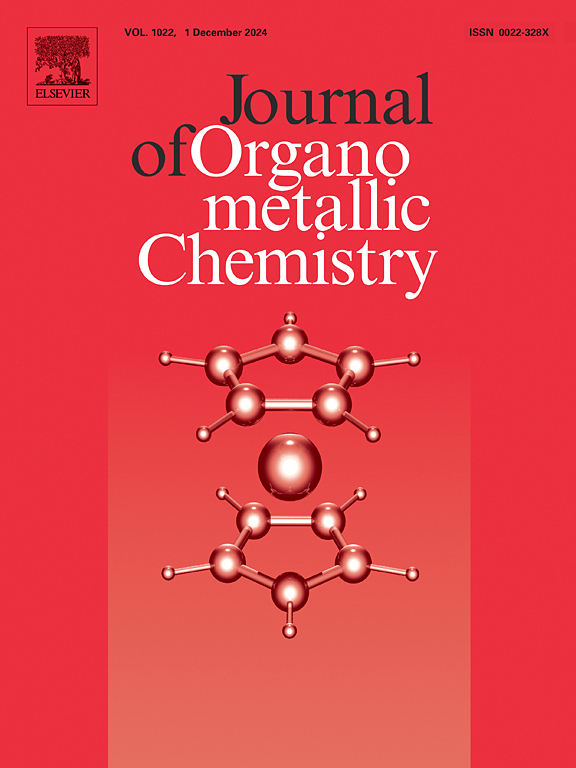探索金属配合物治疗癌症:机制的见解和治疗潜力
IF 2.1
3区 化学
Q3 CHEMISTRY, INORGANIC & NUCLEAR
引用次数: 0
摘要
随着顺铂作为一种有效的抗癌药物的研究和临床应用,近年来在癌症治疗领域的研究探索了金属基支架支持的各种潜在药物治疗方法。有机金属化合物由于其独特的与生物分子相互作用的能力,提供了靶向和有效的抗癌活性,在癌症治疗中受到了极大的关注。这导致了金属药物的发展,与有机分子相比,金属基化合物具有更广泛的功能和作用机制。然而,铂基金属配合物在其抗癌活性谱上有局限性,往往导致副作用和耐药性。为了应对这些挑战,已经开展了广泛的研究,以研究和开发铂类抗癌药物的有效替代品,包括钌、钒、铜、铁、锰、锌和钴等金属。金属药物代表了一种有潜力的新型癌症治疗方法,重新唤起了人们对有效抗癌治疗的兴趣。纳米药物策略为克服常规化疗的局限性,提高治疗效果提供了一个有效的给药平台。多功能纳米材料已经证明了通过提高生物利用度和优化药代动力学来改善药物传递的能力,从而增强化疗药物克服多药耐药(MDR)的有效性。通过深入了解它们的独特特征和作用机制,有可能探索开发靶向和有效抗癌治疗的途径。本综述探讨了各种金属配合物的复杂细节,突出了它们在抗癌中的独特性质和作用模式,同时为它们作为开发有效和靶向抗癌疗法的有前途的药物的潜力提供了有价值的见解,为该领域的未来发展铺平了道路。本文章由计算机程序翻译,如有差异,请以英文原文为准。
Exploring Metal Complexes for Cancer Treatment: Mechanistic Insights and Therapeutic Potential
Recent research in the field of cancer therapeutics has explored various potential drug treatments supported by metal- based scaffolds, following the investigation and clinical application of cisplatin, which has emerged as an active anti- cancer drug. Organometallic compounds have gained significant attention in cancer therapy due to their unique ability to interact with biomolecules, providing targeted and efficient anticancer activity. This has led to the development of metallodrugs, which encompass metal-based compounds with a wider range of functionalities and mechanisms of action compared to organic molecules. However, platinum-based metal complexes have limitations in their spectrum of anti-cancer activities, often resulting in side effects and resistance. To address these challenges, extensive research has been conducted to study and develop effective alternatives to platinum-based anticancer medications, encompassing metals such as ruthenium, vanadium, copper, iron, manganese, zinc, and cobalt. Metallodrugs represent a promising new category of potential cancer treatments, renewing interest in pursuing effective anti-cancer therapies. Nanomedicine strategies offer an efficient drug delivery platform to overcome the limitations of conventional chemotherapy and enhance therapeutic efficacy. Multifunctional nanomaterials have demonstrated the ability to improve drug delivery by increasing bioavailability and optimizing pharmacokinetics, thereby enhancing the effectiveness of chemotherapeutic agents in overcoming multidrug resistance (MDR). By gaining a deeper understanding of their distinct characteristics and mechanisms of action, there is potential to explore avenues for developing targeted and effective anti-cancer treatments. This review explores the intricate details of various metal complexes, highlighting their unique properties and modes of action in combating cancer while providing valuable insights into their potential as promising agents for developing effective and targeted anticancer therapies, paving the way for future advancements in the field.
求助全文
通过发布文献求助,成功后即可免费获取论文全文。
去求助
来源期刊

Journal of Organometallic Chemistry
化学-无机化学与核化学
CiteScore
4.40
自引率
8.70%
发文量
221
审稿时长
36 days
期刊介绍:
The Journal of Organometallic Chemistry targets original papers dealing with theoretical aspects, structural chemistry, synthesis, physical and chemical properties (including reaction mechanisms), and practical applications of organometallic compounds.
Organometallic compounds are defined as compounds that contain metal - carbon bonds. The term metal includes all alkali and alkaline earth metals, all transition metals and the lanthanides and actinides in the Periodic Table. Metalloids including the elements in Group 13 and the heavier members of the Groups 14 - 16 are also included. The term chemistry includes syntheses, characterizations and reaction chemistry of all such compounds. Research reports based on use of organometallic complexes in bioorganometallic chemistry, medicine, material sciences, homogeneous catalysis and energy conversion are also welcome.
The scope of the journal has been enlarged to encompass important research on organometallic complexes in bioorganometallic chemistry and material sciences, and of heavier main group elements in organometallic chemistry. The journal also publishes review articles, short communications and notes.
 求助内容:
求助内容: 应助结果提醒方式:
应助结果提醒方式:


